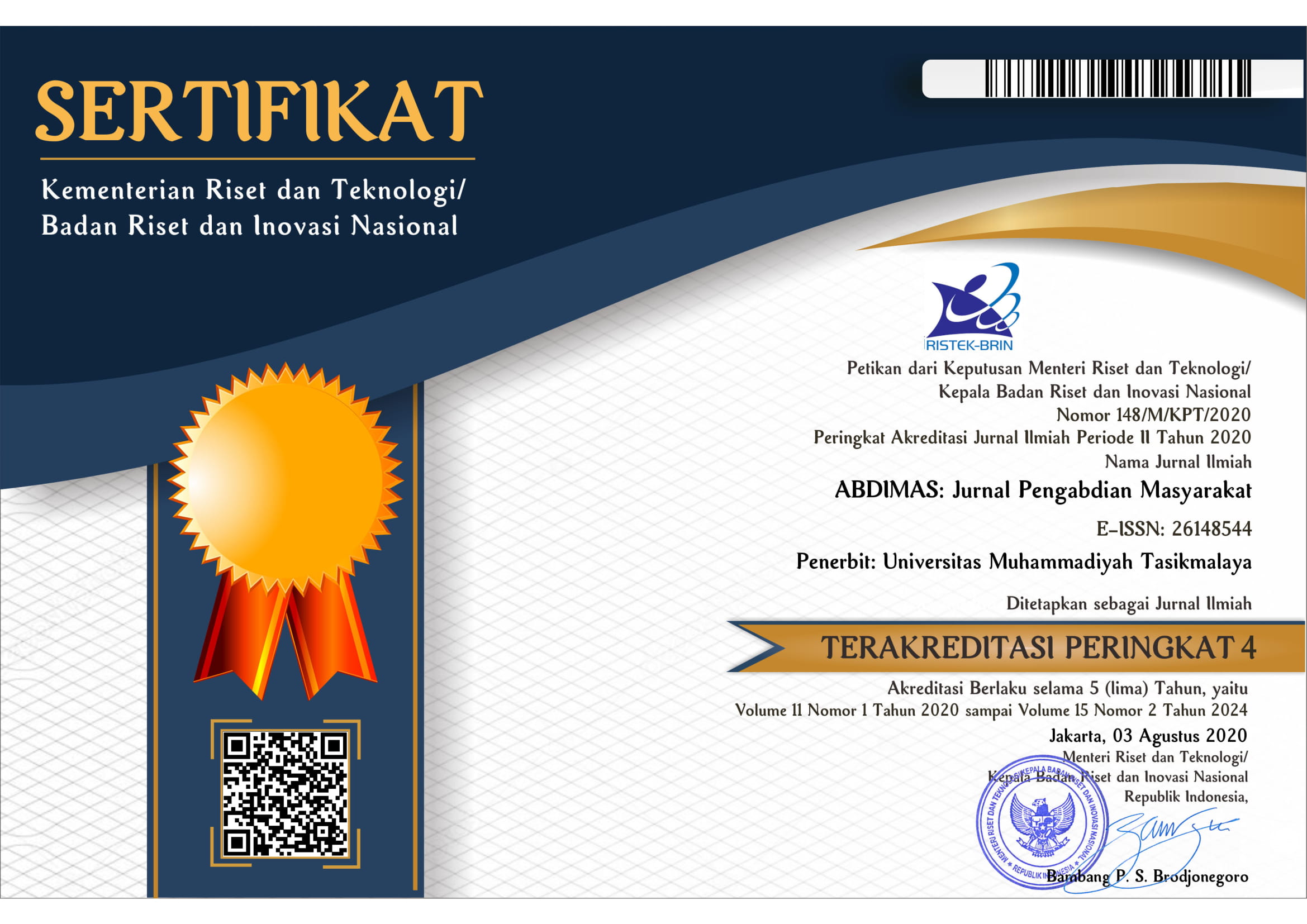Overcoming Stunting in Adolescents at Risk of Anemia in the Kapas District, Sukowati Village, Bojonegoro
DOI:
https://doi.org/10.35568/abdimas.v6i2.2864Keywords:
Community Service, Stunting,Anemia, teenage girlAbstract
Stunting is a serious problem, namely the failure to grow a child or toddler due to chronic malnutrition due to infectious disease disorders, if allowed to greatly affect intelligence. In 2021 the Bojonegoro government prioritizes the handling of stunting, there must be joint work. Data from the 30% National survey are both important issues to deal with together. Prevention of stunting starts in the womb. Habits of teenagers, most importantly iron affects adolescence, don't forget 4 Healthy 5 Perfect or fill my plate activities. The health of a young woman as a prospective mother and at the same time as the nation's successor needs to be a major concern. Adolescents are humans in the transition stage to adulthood with rapid growth associated with iron fulfillment. Insufficient iron intake can cause anemia. The national incidence of anemia at the age of 1 year, 5-11 years, and 15-24 years were 21.7%, 26.4%, and 18.4%, respectively. Factors causing stunting include nutritional intake and parenting patterns for toddlers from caregivers who must be given good and sufficient knowledge. Smoking is also one of the causes of stunting, because it affects the economic pattern of a family. Factors that influence anemia in adolescent girls are lack of consumption of foods containing iron, menstruation, consumption of blood-added tablets, and consumption of tea or coffee after eating. Giving blood supplement tablet therapy is one of the important efforts to prevent and overcome anemia due to iron deficiency. The purpose of this service is to overcome the problem of anemia in adolescent girls based on the results of a qualitative research analysis of the factors causing the problem of low consumption of Fe tablets. This activity has been carried out in Sukowati village, Kapas sub-district, Bojonegoro district with the target of junior high, high school, and vocational school students in Sukowati village as anemia prevention ambassadors. Community empowerment strategies have been carried out in the form of socialization, FGD for PKK mothers and the formation of anemia prevention communities, until finally achieving: 1) raising public awareness, in this case schools and students of SMP, SMA, SMK in Sukowati Village about the importance of preventing anemia, 2) then motivate and enable the community with prevention education and training processes
Downloads
References
Fahrudin, Adi. 2012. Pemberdayaan partisipasi dan penguatan kapasitas masyarakat. Bandung: Humaniora
Hoffbrand AV & Moss PAH. 2013. Kapita Selekta Hematologi. Dalam: Sandra F, Editor. Jakarta: EGC.
Hikmat, Harry. 2006. Strategi Pemberdayaan Masyarakat. Bandung: Humaniora.
Jaelani M, Simanjuntak BY, Yuliantini E. Faktor Risiko yang Berhubungan dengan Kejadian Anemia pada Remaja Putri. J Kesehat. 2017;8(3):358.
Kementerian Kesehatan RI. 2013. Riset Kesehatan Dasar (RISKESDAS) Tahun 2013. Jakarta : Badan bangan Kesehatan Kementerian Kesehatan Republik Indonesia.
Kementerian Kesehatan RI. 2014. Peraturan Menteri Kesehatan Republik Indonesia Nomor 88 Tahun 2014.
Tentang Standar Tablet Tambah Darah Bagi Wanita Usia Subur dan Ibu Hamil.Jakarta : Kementerian Kesehatan Republik Indonesia.
Kementerian Kesehatan RI. 2015. Rencana Strategis Kementerian Kesehatan Tahun 2015-2019: Keputusan Menteri Kesehatan Republik Indonesia Nomor HK. 02.02/Menkes/52/2015
Satyagraha K, Putera K, Noor MS, Heriyani F. Hubungan Pola Makan dengan Kejadian Anemia di SMP Negeri 18 Banjarmasin 2019 / 2020. J homeostatis. 2020;3(2):217–22.
World Health Organization. (2006). Adolcent Nutrition-A Review of The Stituation Selected South-East Asian Countries. Available at: http://www.who.int/nutrition/publications/schoolagechildren/SEA_NUT_163/en/.
World Health Organization and others. (2001). Iron deficiency anaemia assessment, prevention, and control: A guide for programme manager. WHO.
Zeleke, M. B, Shaka M.F, Anbesse, A.T and Tesfaye,H.T (2020). Anemia and Its Determinants among Male and Female Adolescents in Southern Ethiopia: A Comparative Cross-Sectional Study, Hindawi














